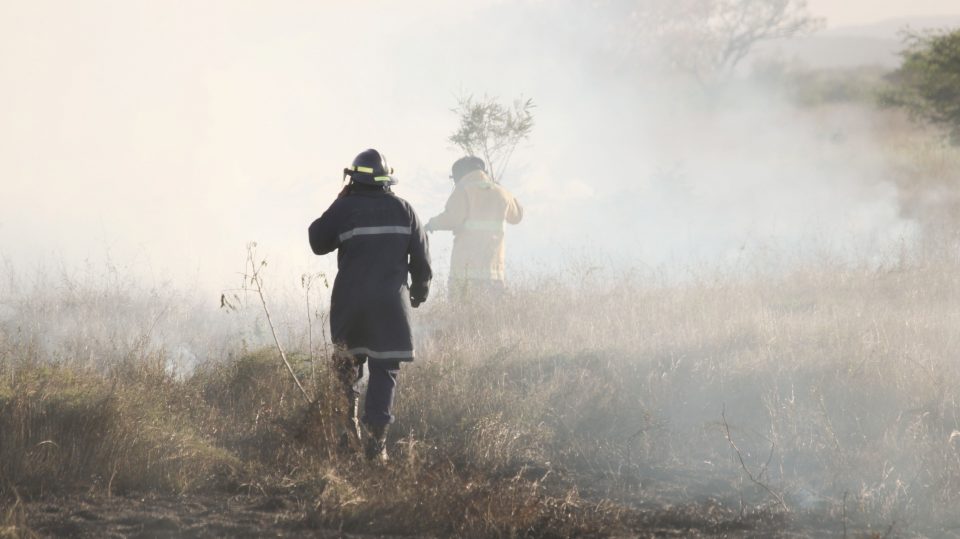After COP26 is 1.5C still alive?

What kind of paper are you?
November 30, 2021
Christmas craft projects using natural materials
December 7, 2021
In the aftermath of the latest United Nations Climate Change Conference, COP26, there has been much debate over whether the climate conference was a success or a failure. We ask: is 1.5 still alive?
The United Nations has warned of catastrophic climate chaos for the planet if exceeds warming of 1.5 degrees above pre-industrial levels.
Today, there is scientific consensus that human activity, especially the release of carbon into the earth’s atmosphere, is the cause of global warming. Since the first COP meeting in Berlin in April 1995, nations have met under the auspices of the United Nations for the Conference of the Parties.
On December 11, 1997, the third COP achieved a historic milestone with the adoption of the Kyoto Protocol, the world’s first greenhouse gas emissions reduction treaty. Then, in Paris in December 2015, the Paris Agreement was adopted when 195 nations agreed to combat climate change and adopt actions and investments towards a low-carbon, resilient and sustainable future. However, while Paris represented a historic diplomatic achievement, the agreements signed there meant the world was still on track for 3.7˚C of warming.
Christina Figueres argues that “the speed of change foreseen in Paris in 2015 has been superseded by improved scientific understanding and the shocking escalation of impacts being felt by the most vulnerable. We now know that we must halve global emissions no later than 2030.”
COP26, the 26th United Nations Climate Change Conference, was held at the SEC Centre in Glasgow, Scotland, United Kingdom, from 31 October to 13 November 2021.
Could Glasgow build on the achievements of Paris and keep the goal of 1.5˚C alive?
The focus of the COP 26 agenda
The British government, the hosts at Glasgow, wanted the conference to be about “cash, coal, cars, trees”. And even by these metrics, progress was patchy.
Following Paris, developed countries were supposed to provide at least US$100bn a year of financial aid to the developing countries that are most affected by the changing climate. In 2021, this still hasn’t happened. And, in Glasgow, developed countries led by the USA and the EU vetoed the creation of a new “Glasgow Loss and Damage Facility” to support vulnerable nations.
On coal, the news was better thanks to China’s announcement it would stop building new coal-fired power projects abroad. However, concerns remain about China’s domestic consumption. Kyla Tienhaara, Canada Research Chair in Economy and Environment at Queen’s University, Ontario, says, “the commitment from more than 25 countries to shut off new international finance for fossil fuel projects by the end of 2022 is one of the biggest successes to come out of Glasgow.”
It could shift more than $25bn a year of public funds out of fossil fuels and into clean energy. However, the watering down of the agreement at the last minute – under pressure from India and China – to “phasing down” rather than “phasing out” coal was a significant setback.
On cars, we saw similar movement – but, again, not enough. More than 30 countries and six auto-manufacturers pledged to end sales of internal combustion engines by 2040. But some of the biggest countries and companies failed to do so; the USA, Germany, China, and Japan, as well as Volkswagen, BMW, and Toyota, failed to make the pledge.
The final of the COP 26 objectives proclaimed by the British government was, perhaps, the most successful. 135 countries agreed to halt and reverse forest loss and land degradation by 2030.
Increasing forest cover and protecting the carbon stores sequestered naturally in forests, arctic tundra, and ancient peat bogs will be critical if the world is going to achieve the goal of keeping warming below 1.5˚C.
On its own terms, then, COP 26 represented significant progress – but not nearly enough.
Additional progress made at COP 26
Progress – but not enough – became a familiar theme.
India made its first commitment to reaching net zero. This is a significant step forward for one of the world’s biggest emitters, but the stated goal of 2070 is decades too late.
The pledge by more than 100 countries, including the US, Japan, and Canada, to significantly cut emissions of methane, a short-lived but powerful greenhouse gas, was significant. Signatories committed to reducing their overall emissions by 30 percent by 2030, compared with 2020 levels. The US government also published a detailed blueprint of how it intends to meet the goal.
Plans to decarbonize construction were welcomed since the sector contributes 10% of global greenhouse gas emissions. A net-zero goal for steel and concrete in public projects by 2050 was announced by the UK, Germany, Canada, India, and the UAE. The Netherlands and India are leading a bio-refinery program to make bio-based alternative fuels more financially attractive. And the US, the UK, and others agreed to promote sustainable aviation fuels.
While positive, these initiatives lack the radical thinking or radical reductions that are really required.
What was missing from the COP 26 agenda?
Given that buildings are responsible for 40% of the world’s carbon emissions, it could be argued they didn’t receive proportionate attention at Glasgow, although Ran Boydell, Visiting Lecturer in Sustainable Development, Heriot-Watt University, says the day allocated to the topic is an improvement on the pre-Paris situation (when it didn’t deserve a mention). The World Green Building Council has said the built environment should be “elevated to a critical climate solution”.
One of the most concerning developments, according to Ian Lowe, Emeritus Professor, School of Science, Griffith University, is the attention given to technologies that won’t be ready to scale in time for them to have the necessary impact.
He says, “One concern I have coming out of COP 26 is that discussions are often promoting technologies that are not currently market-ready or scalable especially nuclear small modular reactors, hydrogen and carbon capture.”
Is the goal of 1.5C alive?
The announcements made during COP 26 have been positive.
Simon Lewis, Professor of Global Change Science at University College London and University of Leeds, and Mark Maslin, Professor of Earth System Science, University College London, conclude, “The Glasgow Climate Pact is incremental progress and not the breakthrough moment needed to curb the worst impacts of climate change… at best we can say the goal of limiting global warming to 1.5°C is on life support – it has a pulse but it’s nearly dead.”
Christina Figueres agrees that COP 26 took us one step closer to combatting the climate crisis. She says, “COP 26 had to reset the pace of transformation to be commensurate with the increasing urgency we face… The final decision reflects the intention to keep 1.5C not just alive, but front and centre of our efforts… [the] set of reductions committed to in Glasgow has taken us down to a 2.4C course, better again but still dangerous.
We are still far from where we need to be, but we now know that the task is to not surpass the ceiling of 1.5˚. No one in their right mind is talking about ‘well below 2C’ anymore. The science is undisputed, and this understanding will continue to force us to accelerate all efforts over time.”
She argues that the decision to convene annually is one of the most positive developments to come out of Glasgow, suggesting, “this accelerated pace already makes the previous five-yearly schedule look outrageously out of whack”.
However, for others, Glasgow was not nearly enough.
The pace and ambition of change must be dramatically increased
Activist Greta Thunberg dismissed the conference as greenwashing and so much “blah, blah, blah”. She committed to continuing to push governments for more action.
Thunberg told leaders, “We can no longer let the people in power decide what is politically possible. We can no longer let the people in power decide what hope is. Hope is not passive. Hope is not blah, blah, blah. Hope is telling the truth. Hope is taking action. And hope always comes from the people.”
Similarly, the writer and campaigner George Monbiot makes the point that we have so little time to effect such crucial and dramatic change. “It’s too late for incremental change,” he argues. Instead, we need radical new solutions. Instead of swapping petrol and diesel cars for electric vehicles which still require resources sourced by destroying rainforests, we need to rebuild cities so the majority of people can walk and cycle.
Like Thunberg, he calls for deeper political change: “It is not hard to envisage a low-carbon economy in which everything else falls apart. The end of fossil fuels will not, by itself, prevent the extinction crisis, the deforestation crisis, the soils crisis, the freshwater crisis, the consumption crisis, the waste crisis; the crisis of smashing and grabbing, accumulating, and discarding that will destroy our prospects and much of the rest of life on Earth. So we also need to use the properties of complex systems to trigger another shift: political change… Our survival depends on raising the scale of civil disobedience until we build the greatest mass movement in history, mobilizing the 25% who can flip the system. We do not consent to the destruction of life on Earth.”
Need more inspiration?
- Read our mini biography of Greta Thunberg.
- We ask: what can Greta Thunberg’s trans-Atlantic journey teach us about the future of business travel?
- Discover what happened when Greta met David.
- Find out about the lives of the people who are caring for our forests.
- Or read how new technology is helping to improve good forest management.
- Plus, if you want to be part of the solution, why not plant a tree?




